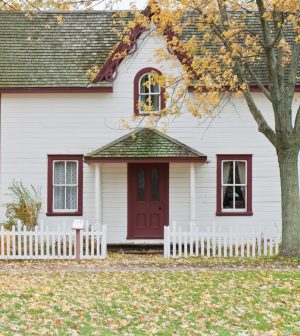- Finding Unshakable Power in a World That Wants to Pull Us ApartPosted 6 months ago
- What could a Donald Trump presidency mean for abortion rights?Posted 6 months ago
- Financial Empowerment: The Game-Changer for Women in Relationships and BeyondPosted 7 months ago
- Mental Health and Wellbeing Tips During and After PregnancyPosted 7 months ago
- Fall Renewal: Step outside your Comfort Zone & Experience Vibrant ChangePosted 7 months ago
- Women Entrepreneurs Need Support SystemsPosted 7 months ago
Why we need to rethink the way we build and design homes

By Ileana Schinder
The first time I watched Home Alone I was a 14-year-old growing up in Argentina. Back then, the idea of America with houses so big you could lose your children in it seemed fun but also perfectly plausible. I watched the movie again with my own children during Christmas of 2020. As an architect, an immigrant and a mom navigating a year of loss and isolation, I wondered about what home had become: for architects, for movies, for immigrants, for families.
My years as a residential architect in Washington, DC gave me signs on what is the new normal, but why is it still so challenging to discuss what housing is? Who deserves it and who can afford it, who can age in it and who can profit from it?
In the years I have designed homes I have seen a pattern: most of my commissions were about carving out space for new modes of housing. Most families reaching out to me wanted better and more sustainable spaces for their new, growing, and aging families. Families looking for housing today are so different from the ones in the Hollywood movies I grew up watching.
It seems that the ideal houses we were made to believe in are fading away. More innovative options that allow for flexibility, sustainability, multigenerational approaches, and financial support are the new norm. From my perspective as an architect, I enjoy watching how the home has transformed from a financial transaction to the stage where a new model of family can thrive.
My career to date has been an exploration of that discovery. The result of years of changing dank basements into family rooms, of converting abandoned garages into additional dwelling units. I may not have had a commission so big where you can lose a child in the attic but, instead, my projects have welcomed older generations, added rental income, and brought spaces to life. I wanted to learn why and explore how we got here: that a country so vast and rich could have looked away from a looming housing crisis that reached humanitarian proportions from coast to coast.
Language has always been my playground, it helped me discover words in English that did not exist in my native Spanish (sherbet!). Language and design have always carried me in the process to design houses. This tango taught me that in America, the term “single-family house” carries a cultural and economic load that could not be translated into Spanish. When it comes to homes and culture, it seemed that the rest of the American housing types were relegated to some ascetic description: apartment, condo, duplex, townhouse. I also discovered that there were no words to describe a housing type that had existed for ages: the additional dwelling unit. As if any format aside from the suburban model needed an explanation to be fully understood.
My immigrant’s English is still sometimes filled with misnomers: popsicle for ice cream, stairs for ladders, and hard hats for helmets. It is never more evident than when I mix the words for house and home. And yet, I am still learning that in America there is always room for innovation and creativity, and improved language skills. My own discovery of language for writing this book may give the keys to others to look around and rethink their options for home.
My journey is an exploration as an architect and an immigrant on how the American housing crisis came to be, how layers and generations of zoning, financial and cultural waves built and demolished concepts of housing and family models. It gives space to everyone else that has questioned where and how to call their place home. It makes room to house those who cannot drive, who struggle to find a place to call home, who want something different from the unrealistic models we have built so far.
It gives permission to rethink our idea of home: where to build it, how to occupy it, and most importantly, why to design the way we do.
********
Ileana Schinder is the author of ‘Housing for Humans: A Book to Imagine, Create and Design a New Housing Model in America’, published by Panoma Press. For more information visit www.ileanaschinder.com.






